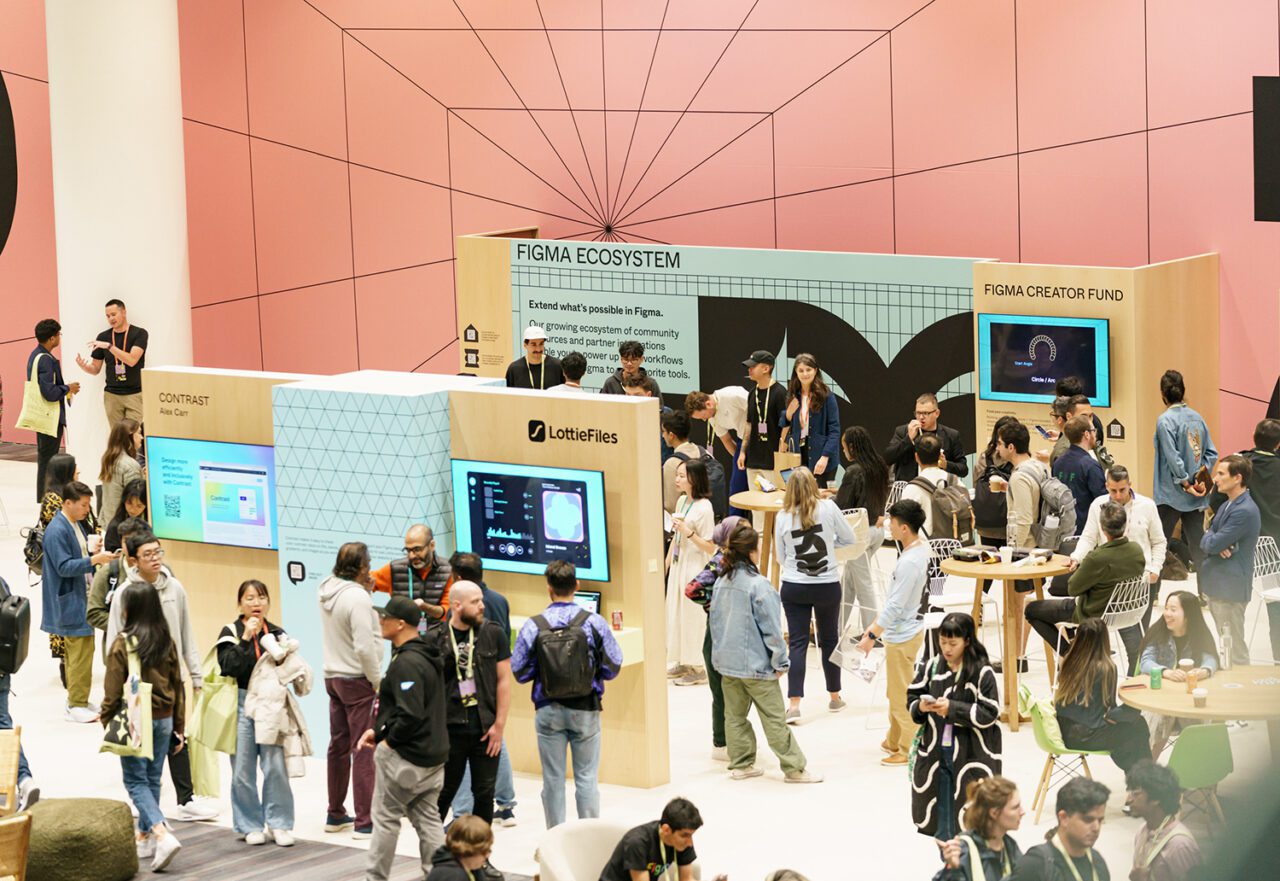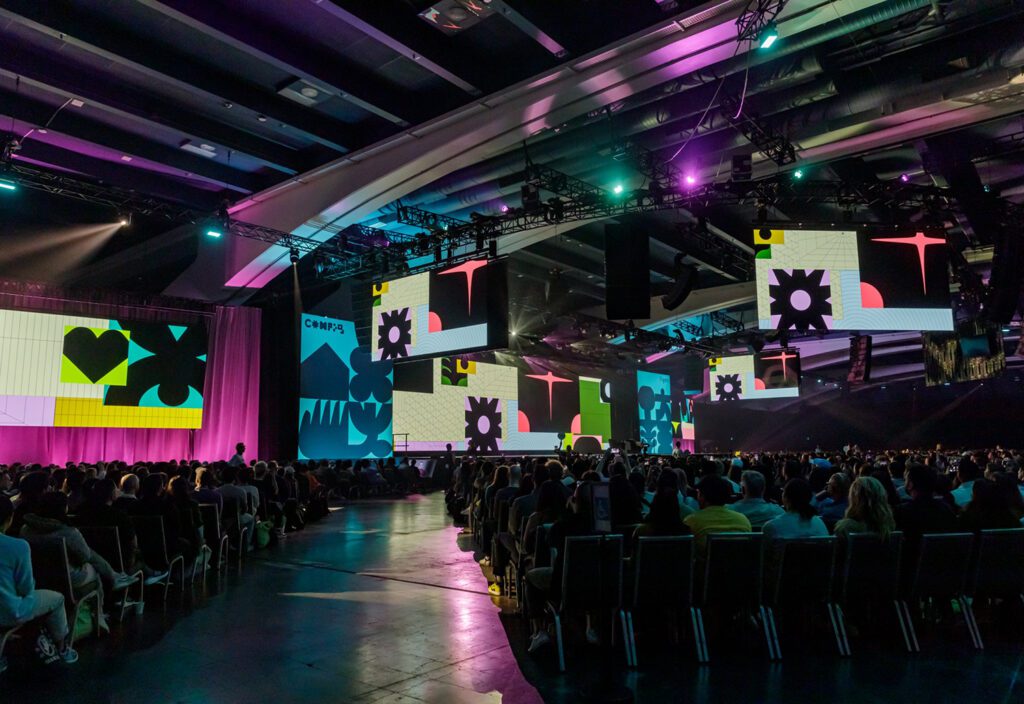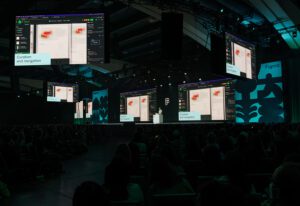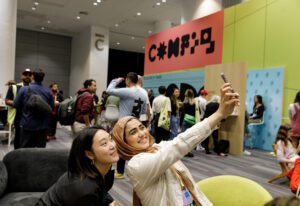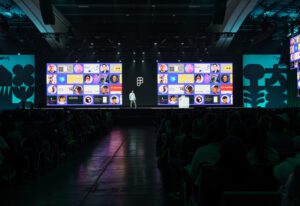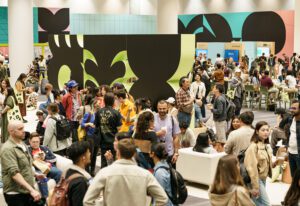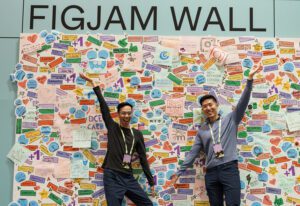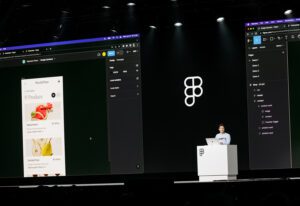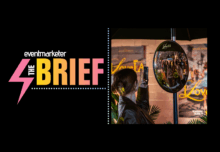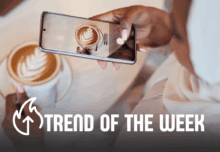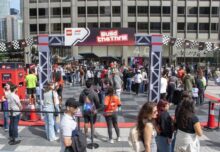Community building is more important than ever for annual events to thrive today, and web-based design platform Figma has found success in not only supporting the community but letting the community take the reins of its five-year-old user conference, Config. And it’s paying off.
The community of users (product designers, builders and marketers) helps populate the agenda. Their speaking pitches (thousands of them) help generate key data about the overall sentiments and challenges facing the community. Their creative contributions (like outfits and crafts) help drive buzz and create a sense of comradery. And their eagerness to independently organize all over the world around the event has helped the brand execute on a hybrid strategy.
Config weathered the pandemic and has grown from 1,000 attendees at its IRL launch in February 2020, to 8,500 attendees at this year’s return to an IRL show, June 21-22, at Moscone Center in San Francisco, what the team described as a launch party for the new Dev Mode feature. We sat down with Claire Butler, senior director-marketing, and Azra Daniels, director-global events, to discuss what they’re learning about embracing a “supporting role” in the event.
 More on B-to-B Community-Building:
More on B-to-B Community-Building:
- Outdoor Retailer Summer’s Redesigned Show Floor Encourages Community and Connection
- IBM Think Kicks Off a New Chapter with an Agile, Personalized Flagship Experience
A program built for insight-gathering
Figma users submit proposals to speak at the event and a subcommittee of Figma designers and technical experts helps make the selections. Out of 1,000 submissions this year (more than double the submissions received for 2022), 55 were ultimately selected. In addition, the team brought in an impressive slate of headliners, including Airbnb CEO Brian Chesky, Netflix VP-Design Steve Johnson, and Adobe Chief Strategy Officer and EVP Scott Belsky.
The submission process doesn’t only benefit the program. Figma’s head of insights synthesizes the data gleaned from the proposals into an annual report that helps drive marketing for the show and provides the community with intel on its current state. For example, the team was able to determine that the community is “more optimistic than ever” based on the overall sentiments in submission language like “there’s never been a better time” or “enabled us to thrive.” The data showed that AI was mentioned three times more year-over-year, as did mentions of accessibility and inclusion, while mentions of “pandemic” were at one-sixth the level they were in 2021.
“As marketers, we’re creating the space, the processes, the strategies, but we bring in the designers and the technical people to help us with the content to make sure it’s authentic and interesting, and that’s a big part of what I think makes it feel like it’s an event for designers as opposed to a big company putting on a conference,” Butler says.
Watch parties and exclusive hybrid offerings
Tens of thousands of people tuned into Config 2023 virtually and community groups, referred to as “Friends of Figma,” organized more than 50 watch parties around the world, including one that took place in Sweden’s first nuclear reactor hall. Virtual attendees had all the same access to content as in-person attendees, but during the 30-minute in-person breaks, the team aired exclusive content for virtual audiences so that those at home wouldn’t drop off during “dead-air” time. The content included product deep dives, interviews with community members and plugin showcases, all broadcasted live from Moscone Center.
“The risk that we took that I think was really lovely is we built this see-through acrylic box in the center of the space where they broadcasted from, and it was this way to connect the virtual world to the in-person world. And so, if you’re joining virtually, during these breaks you’re seeing this content that is special to you, and then you’re seeing some of your teammates online or walking around in the background [of the IRL event],” Daniels says. “We had people going up to the window and waving to their friends watching remotely.”
See the watch parties in action:
Sharing everything the community is doing
Given it’s an event for designers, it’s no surprise that the overall aesthetic is colorful and modern. The team wants the event to feel like a music festival (indeed, users have even begun referring to the event as the Coachella for design). But it wasn’t until the event-inspired outfits, or “confits,” appeared this year that the team realized it had succeeded in creating this vibe.
Users in the community began posting outfits they were planning to wear to the event and, before long, hundreds of attendees were tweeting what they were going to wear. Then, “conkicks” took off, with attendees sharing what footwear they were going to rock that would match the motif of the brand and show. And then, attendees started creating key chains and earrings of the Figma logo to wear to the event—all of this, initiated and executed by the community, all on its own.
“People love creating ancillary events outside of Config, too,” says Daniels. “One day we woke up and there was a website that was like, ‘Hey, here are all of the events that are happening outside of Config,’ and people were planning basketball games and dinners and meetups.”
In fact, two hours after the show closed the team leaving Moscone Center discovered what looked like a thousand attendees hanging out in the adjacent park, Yerba Buena Gardens, rocking their swag and outfits. Figma employees headed over to join and interact with the attendees, post-show.
“I could imagine at another event, if these things happened, they just kind of happen on the side, but when we see this happening, we support it, right?” Butler says. “We put it in our emails, we retweet it, we share it out. And so, we help cultivate that. When these things happen, we figure out how we can jump in and help.”
MERCH WITH A MISSION: Attendees purchased more than $85,000 worth of Figma merchandise at the event’s pop-up swag store where all profits were donated.
Company-wide goals and initiatives
More than a dozen work streams across the company help fuel the event each year, and the team says alignment between sales, product and the executive teams are what has helped it grow into a major strategic initiative for the brand.
“I really like to tell my team that this is not our event. We are the team that helps bring a bunch of other teams’ visions to life,” says Daniels. “There are a bunch of different ways to say, ‘Hey, Config is for the entire company and what do you all want to get out of it?’ Our goal as an events team is to try to tie that all together so it doesn’t feel like a bunch of siloed things in one space. We’re really proud of the way that we’ve been able to do that.”
Examples of those different initiatives this year included a research tank (designed like a reality show “confessional booth”) executed by the research team to allow them to gather important product feedback from the community. The marketing team also put together a partner “ecosystem showcase” in collaboration with the partnerships team. And employee resource groups helped create a photo activation in honor of June Pride Month.
Metrics that matter
Overall, the Config team treats the event like a brand campaign, with a formula consisting of sales goals, attendee goals and engagement goals. But at the center of it all is the community, and making the event feel bigger than the 8,500 people in the room.
“There is a lot that we do to build community and build those relationships over time, but Config, specifically, is one of the big ways we directly connect with these people and these users who are really passionate about the tool,” Butler says. “Growing with that community over time and then giving the power to the community is at the core of how our company works and how our whole go-to-market motion works.” Agency: Sparks.
More Scenes from Config 2023:
Photo credit: Marla Aufmuth; Erin Lubin


